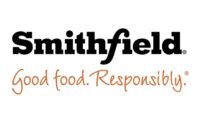Butterball’s milestone achievements in worker safety
Brian Rodgers Interview Part 3 of 3
This video is brought to you by FPEC and Ossid.
Butterball’s senior director of safety and risk management Brian Rodgers discusses some milestone achievements in worker safety, including attaining three million hours without a lost-time injury and reducing injury frequencies as a result of slip-and-fall incidents by 88 percent in just one year.
Andy Hanacek: Talk about the initiatives that you’ve got going on, if there are any that stand out that you are working on across the board, and if there are any milestones, now’s the time to share them, I guess.
Brian Rodgers: It’s been a couple of years since we talked, so we’ve had a plethora of milestones since then. Some of the milestone’s we’ve had in the recent history would be our Mount Olive, N.C. facility had recently gone four million hours without an OSHA lost-time injury, which is a great achievement. Our Huntsville, Ark. facility attained three million hours without a lost-time injury and that’s on top of the eight million hours designation they had a couple years ago. In terms of lost-time injuries, we continue to do a very, very good job, and we really try to focus and put a lot of energy around injury severity, so that’s where we see injury severity resonates is in that lost-time injury rate. So the more that we can do at the plants to minimize that is something in our best interest and unquestionably is in our employee’s best interest. So that’s just one example of the type of achievements we’ve had.
All of our facilities with the exception of our newly acquired facilities remain OSHA voluntary protection VPP sites. There’s only two poultry companies in America that hold that designation, that would be Butterball and Cargill. That’s a project and initiative I don’t think we will ever walk away from, because it really has provided some good benefits. I tell you, one of the things we’ve seen in the last 12 to 15 months is we’ve seen our overall injury performance kind of stabilize. The last several years, we’ve seen some pretty dramatic double digit decreases every single year. This year, we’re not seeing that. So we’ve put some processes in place in plant facilities to reengage management, reengage our employees, reengage our safety managers. One of the things we did that has been really beneficial for us is a project called TIR Engagement. TIR for us is Total Incident Reports. We look at recordable injuries; we look at total injuries, which is a combination of everything coming together; we look at lost-time rates; we look at days away/restricted time, which is DART rates; we look at workers’ compensation data. We look at all of that kind of data to help us drive decisions about where we are going to move forward. We are looking at a variety of different things, such as slip-and-fall injuries. Doing our data analytics, we determined slip-and-fall injuries was our third greatest cause of injury from a frequency perspective, but it was our number two cause of injury from a cost perspective. Obviously, slip-and-falls rose to the top, and this group through the TIR initiative decided to put some rubber to the road and find some solutions. One of the things we did, we vetted a variety of different shoe manufacturers and finally found a shoe manufacturer that we felt produced the absolute best footwear in the marketplace. They had the greatest coefficient of friction for their soles, which we believed would benefit our slip-and-fall reduction efforts. Then, we had a very, very large process around housekeeping improvements. That project, today, has yielded fantastic results. We’ve reduced our injury frequencies as a result of slip-and-falls by 88 percent.
Hanacek: All of this happened in a year’s time?
Rodgers: All of this within the last 12 months. That’s an example of using this TIR initiative to really drive action and really drive results down at the foundational level, but Butterball is also in this process of what we call Traditions With Purpose. There’s a people component of this Traditions with Purpose, and associate safety is a significant component of that people process. This business initiative has really allowed associate safety to really rise all the way to the top of the organization and be seen and be heard and be visualized and be a part of business planning from the Chief Executive Officer down through the senior officers and directors and senior leaders of the organization. Safety has always been incredibly valuable and incredibly important part of our DNA at Butterball, but these are some of the processes that have allowed us to stay on point and not lose track of where we want to go.
Previously: Part 2 on the learning curve of processing different types of meat
Jump to: Part 1 on the challenge of merging company cultures when it comes to worker safety
Be sure to check out our other Q&A interviews with Butterball executives.
Looking for a reprint of this article?
From high-res PDFs to custom plaques, order your copy today!




